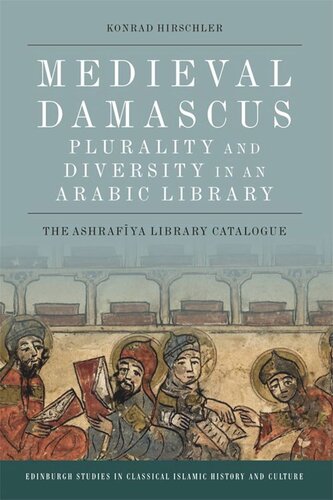

Most ebook files are in PDF format, so you can easily read them using various software such as Foxit Reader or directly on the Google Chrome browser.
Some ebook files are released by publishers in other formats such as .awz, .mobi, .epub, .fb2, etc. You may need to install specific software to read these formats on mobile/PC, such as Calibre.
Please read the tutorial at this link: https://ebookbell.com/faq
We offer FREE conversion to the popular formats you request; however, this may take some time. Therefore, right after payment, please email us, and we will try to provide the service as quickly as possible.
For some exceptional file formats or broken links (if any), please refrain from opening any disputes. Instead, email us first, and we will try to assist within a maximum of 6 hours.
EbookBell Team

5.0
78 reviewsThe written text was a pervasive feature of cultural practices in the medieval Middle East. At the heart of book circulation stood libraries that experienced a rapid expansion from the twelfth century onwards. While the existence of these libraries is well known, our knowledge of their content and structure has been very limited as hardly any medieval Arabic catalogues have been preserved. This book discusses the largest and earliest medieval library of the Middle East for which we have documentation – the Ashrafiya library in the very centre of Damascus – and edits its catalogue. The catalogue shows that even book collections attached to Sunni religious institutions could hold very diverse titles, including Mutazilite theology, Shiite prayers, medical handbooks, manuals for traders, stories from the 1001 Nights, and texts extolling wine consumption. At the same time this library catalogue decisively expands our knowledge of how books were thematically and spatially organised on the shelves of such a large medieval library.
Listing over two thousand books the Ashrafiya catalogue is essential reading for anybody interested in the cultural and intellectual history of Arabic societies. Setting it into a comparative perspective with contemporaneous libraries on the British Isles opens new perspectives for the study of medieval libraries.
Read and download the introduction for free here (pdf)